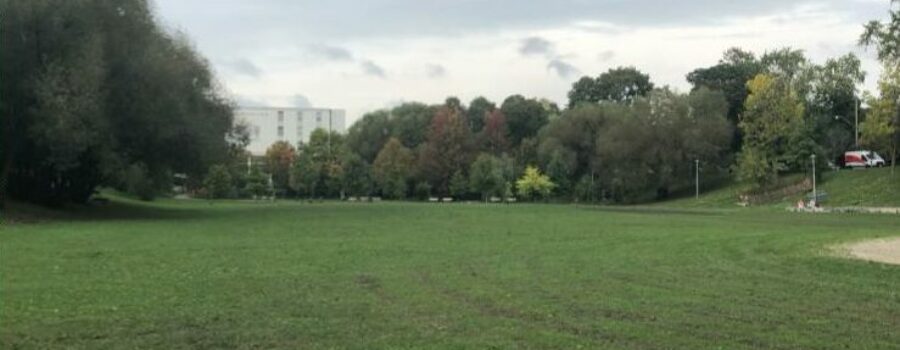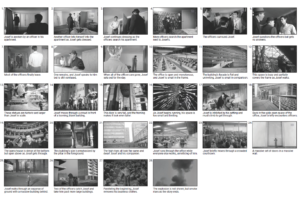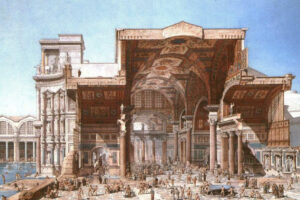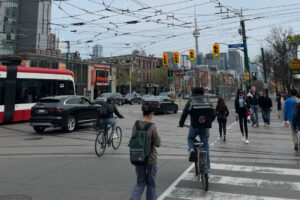In the midst of downtown Toronto, on the outskirts of Koreatown and Little Italy, lies Bickford Park. It is smaller than its northern neighbour Christie Pits Park and less popular, but it has been part of the neighbourhood for the same amount of time: ever since Colonel E. Oscar Bickford sold the property to the city more than a hundred years ago. There is a dog park and a baseball diamond at the park’s southern end while the rest is an expanse of open lawn with a path through it and a handful of benches. A problem relevant to this site is the ineffective use of the land. As neighbourhoods become more congested, it is sometimes necessary for public spaces to adapt so that they can continue to serve the people. Bickford Park is a collection of both defined and undefined spaces that are not meeting the needs of the community; therefore, it would benefit from additional programmatic elements that allow a larger variety of people to use the park.
The first aspect of Bickford Park’s problem is that it has fallen to the wayside in terms of upkeep by the city. Before anything new can be added, the current spaces need to be taken care of. The fences and wooden structures are worn and misshapen. Graffiti covers most available surfaces. There is a washroom facility but in its current state, it is avoided at nearly all costs. These issues create an unwelcoming atmosphere. The park would benefit significantly if they were addressed, however additional renovations are required if Bickford is to reach its full potential. The demographics that it meets are very small; if visitors do not have a dog to walk or a baseball game to play, their options are sitting on a bench or finding something to do on the grass. This leaves out a large number of people: most notably young children, disabled people and the elderly. At this point in the process of urbanization, public spaces should bring in enough of the community to justify the space they take up. Bickford’s current programmatic elements make this impossible. There must be hybridity and an intermixing of programs so that the increasing population can all use the park. Over half of the site is made up of thirdspaces: everyday spaces with the possibility of new meanings. These spaces can be successful in some instances but in this case, they are not sufficient for regularly drawing in visitors. This is unsustainable in a city that needs to effectively use all of the space it has.
Considering this, Bickford Park would benefit from renovating those thirdspaces into more defined spaces. It has a variety of options in this area, but the best place to begin is by examining how the community uses the current programmatic elements. There is very little overlap between them; successful intermixed programming should encourage connections between people. The walking path, for example, fails to do this because it goes up behind the trees and back around. This is not suitable for someone who wants to take a walk but needs to be able to keep an eye on the park; they might need to watch children play or know when a baseball game starts. This is one of many ways that Bickford’s design does not support interaction. It needs additional programming for varied groups of people that lets them connect with each other: a playground, a walking track, a skating rink. A more diverse park will bring in a more diverse community and if that community were to visit on a more consistent basis, a concession stand could be opened which would then support the local economy. There is so much potential waiting in all of that wide open space but due to its increasingly dense and overurban setting, it must be put to use.
In conclusion, Toronto is a growing city and its public spaces must support the people around them. As the city grows it must be intentional with its space or it is at risk of urban sprawl. Therefore, it is necessary to review the public spaces that already exist and adapt them before creating new ones. This is the problem with Bickford Park: it is meeting the needs of some but not enough and this has to change. This is because it does not have enough defined spaces to support the neighbourhood around it and the ones that it does have are not in good condition. Instead of dividing people up into sections, Bickford Park should be a place where anyone can go and spend the afternoon interacting with their community. This problem is true for many parks like Bickford and they all need to consider the changing demographics around them and adapt to support them while using the land as efficiently as possible.





